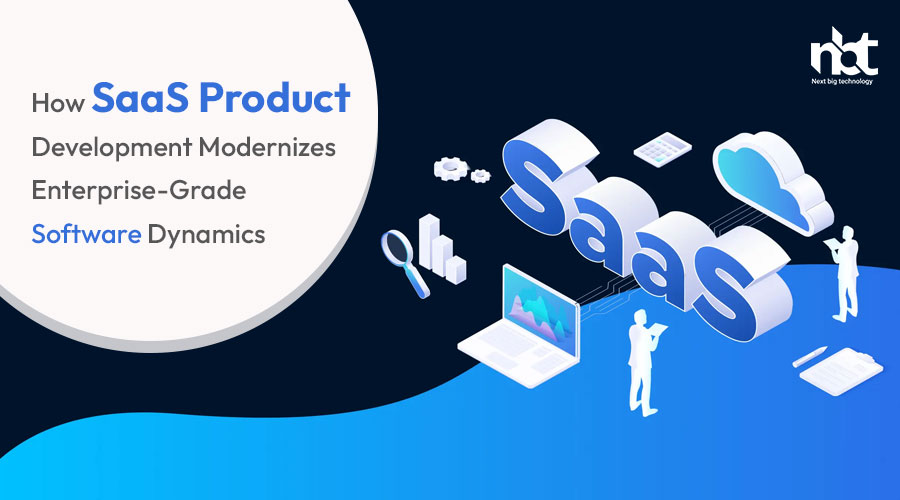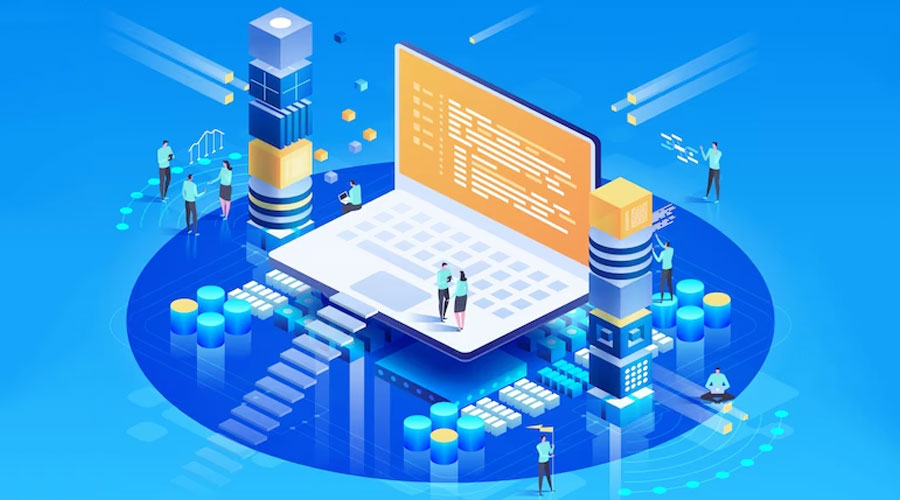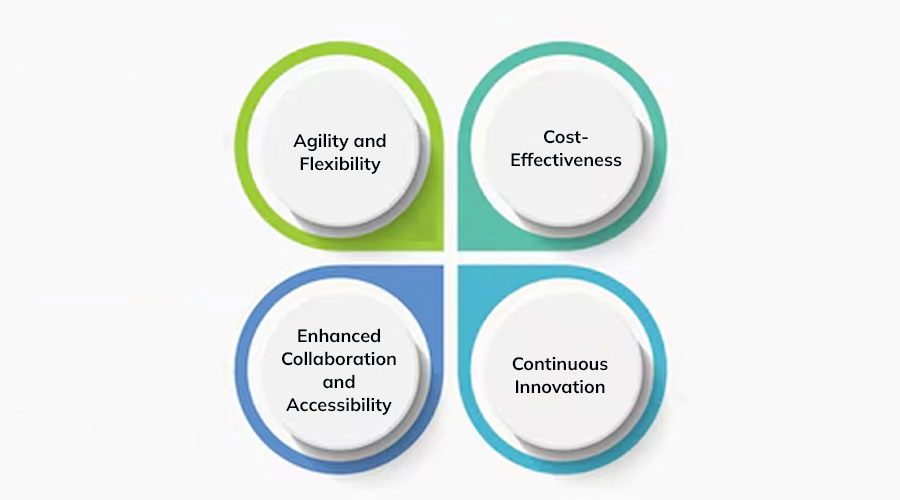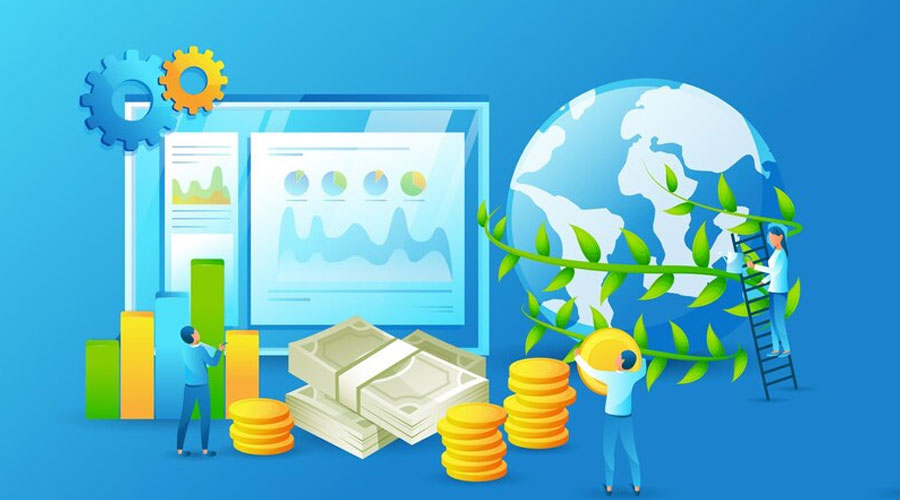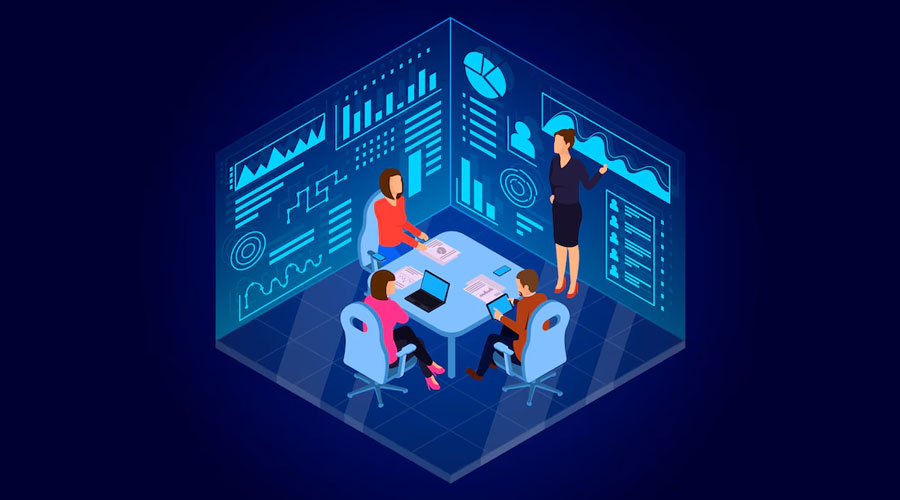Table of Contents
Introduction
In today’s rapidly evolving digital landscape, the demand for enterprise-grade software solutions is at an all-time high. Businesses across various industries are constantly seeking ways to streamline operations, enhance efficiency, and stay ahead of the competition. This has led to a significant shift towards the adoption of Software as a Service (SaaS) product development, revolutionizing the way enterprise software is conceptualized, developed, and deployed.
Introduction to SaaS Product Development: SaaS product development refers to the process of creating software applications that are hosted and maintained centrally by a provider and accessed by users over the internet. Unlike traditional on-premises software, SaaS solutions offer a subscription-based model, allowing businesses to access the software on-demand without the need for extensive infrastructure or upfront investment.
Modernizing Enterprise Dynamics: The traditional approach to enterprise software development often involved lengthy development cycles, high upfront costs, and complex deployment processes. However, with the advent of SaaS product development, enterprises can now enjoy a host of benefits that modernize their software dynamics:
- Agility and Flexibility: SaaS product development enables enterprises to rapidly adapt to changing market demands and evolving business needs. With cloud-based infrastructure and continuous delivery pipelines, developers can quickly roll out updates and new features, ensuring that the software remains relevant and competitive.
- Cost-Efficiency: By eliminating the need for upfront hardware investments and reducing maintenance overheads, SaaS product development offers a cost-effective alternative to traditional software deployment models. Enterprises can scale their usage based on demand, paying only for the resources they consume, thereby optimizing their IT expenditure.
- Scalability and Performance: SaaS solutions are designed to scale effortlessly to accommodate growing user bases and increasing workloads. With cloud-native architectures and elastic infrastructure, enterprises can ensure optimal performance and availability, even during peak usage periods.
- Enhanced Collaboration: SaaS product development fosters collaboration and communication across geographically dispersed teams. With centralized data storage and real-time collaboration tools, employees can seamlessly collaborate on projects, share information, and improve productivity.
- Security and Compliance: SaaS providers invest heavily in robust security measures and compliance frameworks to protect sensitive data and ensure regulatory compliance. Enterprises can leverage the expertise of SaaS vendors to mitigate security risks and adhere to industry-specific regulations without compromising operational efficiency.
What is SaaS Product Development, how to Create Modernizes Enterprise-Grade Software Dynamics
In today’s rapidly evolving digital landscape, Software as a Service (SaaS) has emerged as a game-changer for businesses looking to streamline operations, enhance scalability, and deliver exceptional user experiences. SaaS product development represents a shift towards cloud-based solutions that offer flexibility, accessibility, and cost-effectiveness. However, creating modern enterprise-grade software dynamics requires careful planning, innovative strategies, and a customer-centric approach. In this article, we delve into what SaaS product development entails and explore how businesses can create sophisticated software solutions tailored to meet the demands of the modern market.
Understanding SaaS Product Development:
At its core, SaaS product development involves the creation, deployment, and maintenance of software applications that are hosted in the cloud and accessed via the internet. Unlike traditional software models that require installation on individual devices, SaaS applications are centrally managed and can be accessed from any location with an internet connection. This approach offers several advantages, including:
- Scalability: SaaS applications can easily scale to accommodate growing user bases and evolving business needs. Whether a company experiences rapid expansion or seasonal fluctuations in demand, SaaS solutions can adapt to meet changing requirements without significant infrastructure investments.
- Cost-Efficiency: By eliminating the need for on-premises hardware and infrastructure, SaaS reduces upfront costs and enables businesses to pay for only the resources they use. This subscription-based pricing model offers predictable expenses and allows companies to allocate resources more efficiently.
- Accessibility: With SaaS, users can access software applications anytime, anywhere, using a variety of devices, including laptops, tablets, and smartphones. This accessibility promotes collaboration, facilitates remote work, and enhances productivity across diverse teams and locations.
Creating Modern Enterprise-Grade Software Dynamics:
To develop SaaS solutions that resonate with modern enterprises, businesses must prioritize innovation, agility, and customer satisfaction. Here are essential steps to create software dynamics that meet the evolving needs of the market:
- Identify Market Needs: Conduct thorough market research to identify gaps, trends, and customer pain points. Understanding the unique challenges faced by businesses in your target market will guide the development process and ensure that your SaaS solution addresses critical needs effectively.
- Embrace Agile Methodologies: Agile development methodologies, such as Scrum or Kanban, promote iterative development, collaboration, and rapid response to feedback. By adopting an agile approach, development teams can deliver value incrementally, adapt to changing requirements, and maintain a focus on continuous improvement.
- Prioritize User Experience: User experience (UX) plays a pivotal role in the success of SaaS applications. Prioritize intuitive design, seamless navigation, and responsive interfaces to enhance user satisfaction and drive adoption. Solicit feedback from users throughout the development process to identify areas for improvement and refine the user experience iteratively.
- Ensure Security and Compliance: Security and compliance are paramount considerations in SaaS product development, particularly for enterprise-grade solutions handling sensitive data. Implement robust security measures, such as encryption, access controls, and regular audits, to safeguard data integrity and protect against cyber threats. Additionally, ensure compliance with relevant regulations, such as GDPR or HIPAA, to instill trust and confidence in your product.
- Leverage Emerging Technologies: Stay abreast of emerging technologies, such as artificial intelligence (AI), machine learning (ML), and blockchain, to enhance the capabilities and functionality of your SaaS solution. By integrating cutting-edge technologies, businesses can differentiate their offerings, unlock new opportunities, and stay ahead of competitors in the dynamic marketplace.
- Enable Seamless Integration: In today’s interconnected ecosystem, interoperability is essential for SaaS solutions to thrive. Ensure seamless integration with third-party platforms, APIs, and existing systems to maximize utility and facilitate data exchange. Compatibility with popular tools and services enhances the value proposition of your product and fosters greater adoption among users.
- Continuous Improvement: SaaS product development is an ongoing journey characterized by continuous iteration and refinement. Monitor key performance indicators (KPIs), gather user feedback, and embrace a culture of experimentation and learning to drive innovation and maintain relevance in the ever-evolving landscape.
SaaS Product Development Modernizes Enterprise-Grade Software Dynamics Process
In today’s fast-paced business landscape, enterprise-grade software dynamics demand a modernized approach to stay relevant and competitive. This is where Software as a Service (SaaS) product development steps in, offering a transformative solution to streamline processes, enhance efficiency, and drive innovation.
Traditionally, enterprise software development followed a lengthy and resource-intensive cycle. However, the advent of SaaS has revolutionized this approach by providing a cloud-based model that offers scalability, flexibility, and accessibility like never before. Let’s delve into how SaaS product development is modernizing enterprise-grade software dynamics.
Agility and Flexibility: One of the key advantages of SaaS product development is its agility. Unlike traditional software development, which often involves long development cycles and cumbersome updates, SaaS allows for rapid iterations and enhancements. This agility enables enterprises to respond quickly to changing market demands and customer needs, ensuring their software remains competitive and relevant in a dynamic environment.
Furthermore, the flexible nature of SaaS enables customization to meet specific requirements of different businesses. Whether it’s scalability to accommodate growth, integration with existing systems, or personalized features, SaaS products can be tailored to fit the unique needs of each enterprise, providing a level of flexibility that traditional software solutions struggle to match.
Cost-Effectiveness: SaaS product development offers a cost-effective alternative to traditional software development models. By eliminating the need for upfront infrastructure investments and reducing maintenance costs, SaaS allows enterprises to allocate resources more efficiently and focus on core business activities. Additionally, the pay-as-you-go pricing model of SaaS means that enterprises only pay for the features and resources they use, making it a more budget-friendly option for businesses of all sizes.
Enhanced Collaboration and Accessibility: Collaboration is essential in today’s interconnected world, and SaaS product development facilitates seamless collaboration among teams, regardless of their geographical location. With cloud-based access to software applications and data, employees can work together in real-time, increasing productivity and efficiency.
Moreover, the accessibility of SaaS products enables enterprises to reach a broader audience and serve customers more effectively. Whether it’s through web-based interfaces, mobile applications, or APIs, SaaS products can be accessed anytime, anywhere, from any device, providing unparalleled convenience and accessibility to users.
Continuous Innovation: Innovation is at the heart of SaaS product development. With regular updates and feature enhancements delivered seamlessly through the cloud, SaaS products ensure that enterprises always have access to the latest technology and capabilities. This continuous innovation not only keeps software systems up-to-date but also allows enterprises to stay ahead of the competition and drive digital transformation within their organizations.
What is the Estimated Cost to Build SaaS Product?
In today’s digital age, Software as a Service (SaaS) has become the backbone of many businesses, offering convenient and scalable solutions for various needs. From project management tools to customer relationship management systems, SaaS products streamline operations and enhance efficiency. However, one question that often arises is: What is the estimated cost to build a SaaS product? Let’s delve into the intricacies of this topic.
- Defining the Scope: Before delving into cost estimations, it’s crucial to define the scope of your SaaS product. What features do you want to include? Who is your target audience? Understanding your product’s requirements will provide a clear direction for estimating costs accurately.
- Development Team: The backbone of any SaaS product development is the team behind it. Hiring skilled developers, designers, project managers, and quality assurance specialists is essential. The cost of building a SaaS product largely depends on factors such as team size, experience level, and location. For instance, hiring a team from regions with lower labor costs might reduce expenses.
- Technology Stack: Choosing the right technology stack is vital for the success of your SaaS product. Whether you opt for a traditional LAMP (Linux, Apache, MySQL, PHP) stack or modern frameworks like Node.js or Django, each technology comes with its own set of costs and considerations. Additionally, integrating third-party APIs or cloud services may incur additional expenses.
- Infrastructure and Hosting: Hosting is another significant factor in cost estimation. Depending on the scale of your SaaS product, you may choose between shared hosting, virtual private servers (VPS), or cloud hosting solutions like AWS, Azure, or Google Cloud. Factors such as server capacity, scalability, and security protocols will influence hosting costs.
- Development Timeframe: Time is money in software development. The longer it takes to develop your SaaS product, the higher the costs. Efficient project management practices, such as Agile or Scrum, can help streamline the development process, reducing time and expenses.
- Testing and Quality Assurance: Ensuring your SaaS product is bug-free and user-friendly is paramount. Investing in thorough testing and quality assurance processes can prevent costly errors and enhance customer satisfaction. Consider allocating a portion of your budget for rigorous testing methodologies.
- Maintenance and Updates: Building a SaaS product is just the beginning; ongoing maintenance and updates are essential for its longevity. Budgeting for regular maintenance, bug fixes, feature enhancements, and security patches is critical to keeping your product competitive and secure.
- Marketing and Customer Acquisition: Once your SaaS product is developed, you’ll need to allocate resources for marketing and customer acquisition. From content marketing to paid advertising campaigns, establishing a robust marketing strategy will help you reach your target audience and drive user adoption.
- Legal and Compliance: Compliance with data protection regulations such as GDPR or CCPA is non-negotiable for SaaS businesses. Budgeting for legal fees, compliance audits, and data security measures is essential to avoid hefty fines and reputational damage.
- Contingency Fund: Last but not least, it’s wise to allocate a contingency fund for unforeseen expenses or scope changes during the development process. This buffer can help mitigate risks and ensure your project stays within budget.
Why Choose as SaaS Product Development Modernizes Enterprise-Grade Software Dynamics
In today’s fast-paced digital landscape, the demand for enterprise-grade software has never been higher. As businesses strive to stay competitive and meet the evolving needs of their customers, traditional software development methods are being challenged by the emergence of Software as a Service (SaaS) product development. This modern approach to software delivery offers numerous advantages that are revolutionizing the dynamics of enterprise software.
- Agility and Scalability: SaaS product development allows for greater agility and scalability compared to traditional software development models. With SaaS, updates and enhancements can be rolled out seamlessly across the entire user base, ensuring that businesses always have access to the latest features and functionalities. This agility is crucial in today’s rapidly changing business environment, where the ability to quickly adapt to new market trends can mean the difference between success and failure.
- Cost-Effectiveness: Traditional software development often requires significant upfront investment in infrastructure, hardware, and personnel. In contrast, SaaS product development follows a subscription-based model, where businesses pay only for the services they use. This pay-as-you-go approach not only reduces initial capital expenditures but also provides greater flexibility in scaling resources up or down as needed, making it a more cost-effective solution for businesses of all sizes.
- Enhanced Collaboration and Accessibility: SaaS products are typically cloud-based, allowing users to access them from anywhere with an internet connection. This accessibility fosters greater collaboration among teams, regardless of their geographical location, leading to improved productivity and efficiency. Additionally, cloud-based SaaS solutions often include built-in collaboration tools, such as real-time editing and commenting, further streamlining communication and workflow processes.
- Security and Compliance: Security is a top priority for enterprise software, especially as businesses increasingly rely on digital tools to store and manage sensitive data. SaaS product development leverages the latest security protocols and encryption technologies to ensure that data remains safe and protected at all times. Furthermore, reputable SaaS providers undergo regular security audits and compliance certifications to meet industry standards and regulatory requirements, providing businesses with peace of mind knowing that their data is in good hands.
- Continuous Innovation: One of the most significant advantages of SaaS product development is its focus on continuous innovation. SaaS providers are constantly iterating and improving their products based on customer feedback and market trends. This iterative approach allows businesses to stay ahead of the curve and quickly adapt to changing user needs, without the hassle of managing software updates and patches internally.
How to Create a Business SaaS Product Development Modernizes Enterprise-Grade Software Dynamics – Team and Tech Stack
In the ever-evolving landscape of enterprise software, the shift towards Software as a Service (SaaS) has been monumental. Businesses are increasingly recognizing the benefits of SaaS products, which offer scalability, accessibility, and cost-efficiency. However, creating a successful business SaaS product requires careful planning, a skilled team, and the right technological infrastructure. In this guide, we’ll explore how to navigate the complexities of developing a modern SaaS product that revolutionizes enterprise-grade software dynamics.
- Understanding the Market and User Needs: Before embarking on the development journey, it’s crucial to conduct thorough market research and understand the needs of your target users. Identify pain points in existing enterprise software solutions and envision how your SaaS product can address these challenges more effectively. Engage with potential users through surveys, interviews, and focus groups to gather valuable insights that will inform your product development strategy.
- Building the Right Team: Developing a business SaaS product requires a multidisciplinary team with expertise in various domains. Your team should ideally consist of software engineers, UX/UI designers, product managers, QA testers, and domain experts familiar with the specific industry vertical you’re targeting. Foster a collaborative environment where team members can leverage their respective skills to innovate and iterate rapidly.
- Choosing the Right Tech Stack: Selecting the appropriate technology stack is fundamental to the success of your SaaS product. Consider factors such as scalability, security, interoperability, and ease of maintenance when evaluating different technologies. Cloud-native technologies, such as AWS, Azure, or Google Cloud Platform, provide the scalability and flexibility needed for modern SaaS applications. Additionally, frameworks like React.js or Angular.js for frontend development and Node.js or Django for backend development offer robust foundations for building responsive and scalable SaaS products.
- Embracing Agile Development Methodologies: Agile methodologies, such as Scrum or Kanban, are well-suited for SaaS product development, enabling iterative development, frequent releases, and rapid adaptation to changing requirements. Implementing agile practices fosters transparency, collaboration, and continuous improvement within your development team. Break down the development process into smaller, manageable sprints, and prioritize features based on user feedback and market demands.
- Prioritizing Security and Compliance: Security is paramount when it comes to enterprise-grade SaaS products, especially in industries dealing with sensitive data such as healthcare or finance. Implement robust security measures, including data encryption, authentication mechanisms, role-based access control, and regular security audits to safeguard your users’ data. Moreover, ensure compliance with relevant regulations, such as GDPR or HIPAA, to build trust and credibility with your customers.
- Iterative Testing and Feedback Loop: Continuous testing and feedback are integral parts of the SaaS product development lifecycle. Conduct thorough testing at each stage of development, including unit testing, integration testing, and user acceptance testing, to identify and rectify any issues early on. Solicit feedback from beta users and iterate based on their suggestions to enhance the usability, functionality, and overall user experience of your SaaS product.
- Providing Ongoing Support and Maintenance: Launching your SaaS product is just the beginning of the journey. Provide ongoing support and maintenance to address customer inquiries, troubleshoot issues, and roll out updates and enhancements regularly. Establish channels for customer communication, such as email support, live chat, or community forums, to ensure timely assistance and foster a sense of community among your user base.
Top SaaS Product Development Modernizes Enterprise-Grade Software Dynamics Companies
In the dynamic landscape of enterprise-grade software dynamics, the emergence of Software as a Service (SaaS) has sparked a paradigm shift. Traditional software development models are gradually giving way to the agility and scalability offered by SaaS products. As businesses seek to modernize their operations, the role of top SaaS product development becomes increasingly pivotal in driving innovation and competitiveness.
-
Next Big Technology:

Focus Area
- Mobile App Development
- App Designing (UI/UX)
- Software Development
- Web Development
- AR & VR Development
- Big Data & BI
- Cloud Computing Services
- DevOps
- E-commerce Development
Industries Focus
- Art, Entertainment & Music
- Business Services
- Consumer Products
- Designing
- Education
- Financial & Payments
- Gaming
- Government
- Healthcare & Medical
- Hospitality
- Information Technology
- Legal & Compliance
- Manufacturing
- Media
One of the key advantages of SaaS product development is its ability to facilitate rapid innovation. By leveraging cloud computing and agile development methodologies, SaaS providers can continuously iterate and enhance their offerings, ensuring that customers have access to the latest features and updates. This agility enables enterprises to stay ahead of the curve in an ever-evolving market landscape.
Modernizing Enterprise Operations: Enterprise-grade software dynamics companies are increasingly turning to SaaS solutions to modernize their operations and streamline their workflows. Whether it’s project management, customer relationship management, or enterprise resource planning, SaaS products offer a level of flexibility and customization that traditional software simply cannot match.
Moreover, SaaS solutions are inherently scalable, allowing enterprises to adapt to changing business needs with ease. Whether a company is experiencing rapid growth or navigating market downturns, SaaS products can dynamically adjust to accommodate fluctuations in demand, ensuring optimal performance and cost-efficiency.
Enhancing Collaboration and Connectivity: Another area where top SaaS product development excels is in enhancing collaboration and connectivity across organizations. With features such as real-time collaboration, document sharing, and integrated communication tools, SaaS solutions enable teams to work together seamlessly, regardless of geographical location or time zone.
Furthermore, SaaS products often integrate with other enterprise systems and applications, creating a cohesive ecosystem that drives efficiency and productivity. Whether it’s syncing data between CRM and marketing automation platforms or integrating with third-party analytics tools, SaaS solutions provide a centralized hub for managing critical business processes.
Navigating Security and Compliance: Security and compliance are top priorities for enterprise-grade software dynamics companies, and SaaS product development is no exception. Leading SaaS providers invest heavily in robust security measures, including data encryption, access controls, and regular security audits, to ensure that customer data remains protected at all times.
Moreover, SaaS solutions often adhere to industry-specific compliance standards, such as GDPR, HIPAA, or SOC 2, providing enterprises with peace of mind knowing that their data is handled in accordance with regulatory requirements. This focus on security and compliance is essential for building trust and confidence among customers, particularly in industries where data privacy is paramount.
FAQs on SaaS Product Development Modernizes Enterprise-Grade Software Dynamics
In today’s fast-paced digital landscape, Software as a Service (SaaS) has emerged as a game-changer for enterprises seeking agile and scalable solutions. SaaS product development, with its promise of innovation and flexibility, has become increasingly crucial in modernizing enterprise-grade software dynamics. However, navigating through the intricacies of SaaS development can be daunting for many. To shed light on this transformative process, let’s delve into some frequently asked questions (FAQs) regarding SaaS product development:
1. What exactly is SaaS product development?
SaaS product development involves the creation, deployment, and maintenance of software applications that are delivered to users over the internet as a service. Unlike traditional software, SaaS applications are centrally hosted, allowing users to access them via web browsers without the need for complex installations or updates.
2. How does SaaS differ from traditional software development?
Unlike traditional software development, which often involves lengthy development cycles and upfront costs, SaaS follows a subscription-based model. This means that users pay a recurring fee to access the software, typically on a monthly or annual basis. Additionally, SaaS applications are designed to be scalable, allowing businesses to easily adjust their usage based on evolving needs.
3. What are the key benefits of SaaS product development for enterprises?
SaaS product development offers a plethora of benefits for enterprises, including:
- Cost-effectiveness: SaaS eliminates the need for upfront investments in hardware and software, making it more cost-effective for businesses of all sizes.
- Scalability: SaaS applications can easily scale up or down to accommodate changes in user demand or business requirements.
- Accessibility: With SaaS, users can access the software from any location with an internet connection, fostering collaboration and remote work.
- Automatic Updates: SaaS providers handle all updates and maintenance tasks, ensuring that users always have access to the latest features and security patches.
4. What are the key considerations in SaaS product development?
When embarking on SaaS product development, several key considerations must be taken into account, including:
- Security: Protecting sensitive data is paramount in SaaS development. Implementing robust security measures and compliance standards is essential to safeguarding user information.
- Scalability: Designing the application to handle growing user bases and increased workload is critical for long-term success.
- User Experience (UX): Creating an intuitive and user-friendly interface is vital for driving adoption and ensuring customer satisfaction.
- Data Management: Effective data management practices are essential for ensuring data integrity, availability, and compliance with regulatory requirements.
5. How can enterprises ensure the success of their SaaS product development initiatives?
To maximize the success of SaaS product development initiatives, enterprises should:
- Understand their target audience: Conduct thorough market research to identify the needs and preferences of target users.
- Prioritize agility and innovation: Embrace agile development methodologies to rapidly iterate and respond to changing market dynamics.
- Foster collaboration: Encourage cross-functional collaboration between development, design, and marketing teams to ensure alignment and cohesion throughout the development process.
- Seek feedback: Continuously solicit feedback from users to identify areas for improvement and refine the product iteratively.
Thanks for reading our post “How SaaS Product Development Modernizes Enterprise-Grade Software Dynamics”. Please connect with us to learn more about SaaS Product Development Modernizes.







